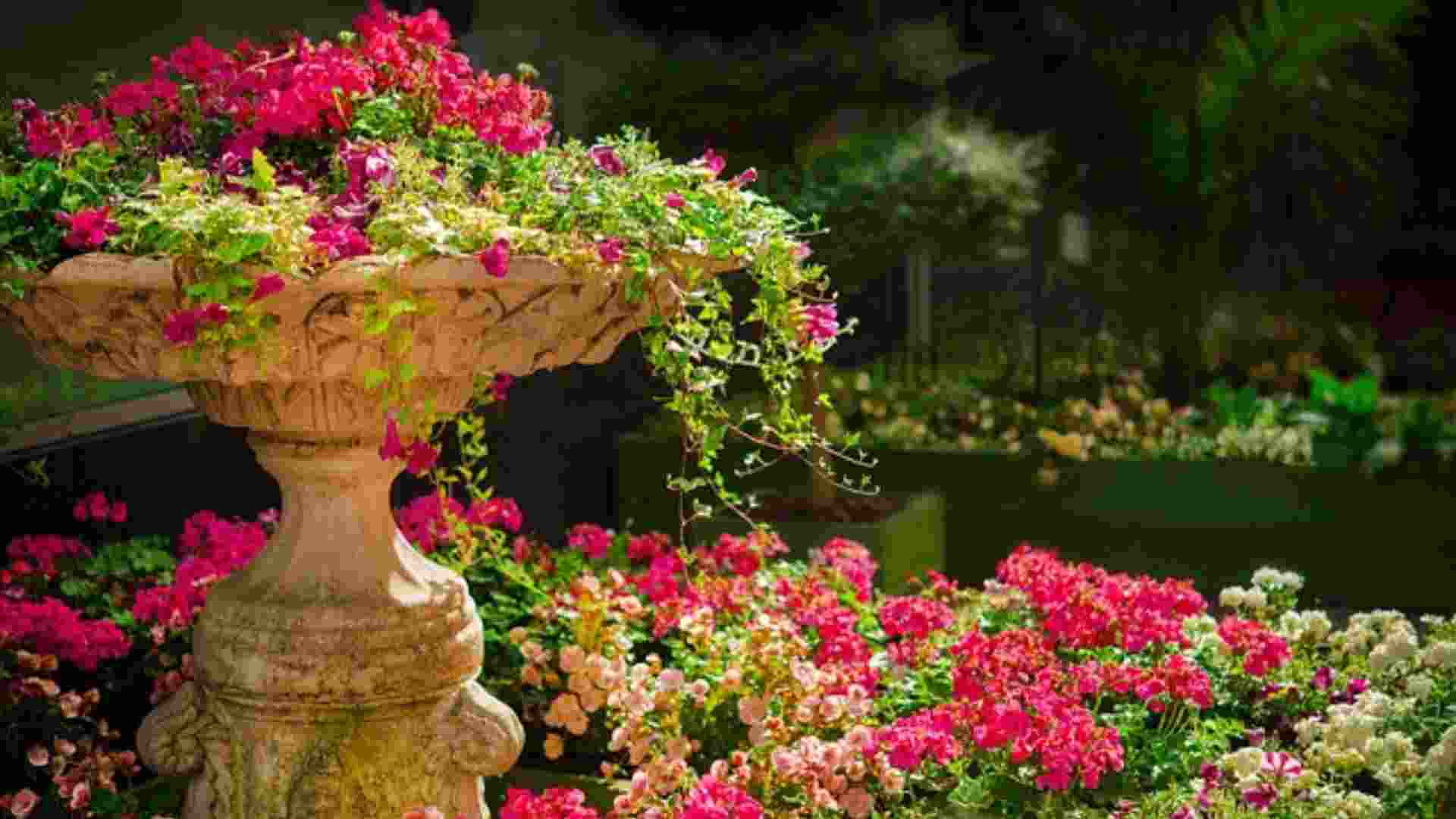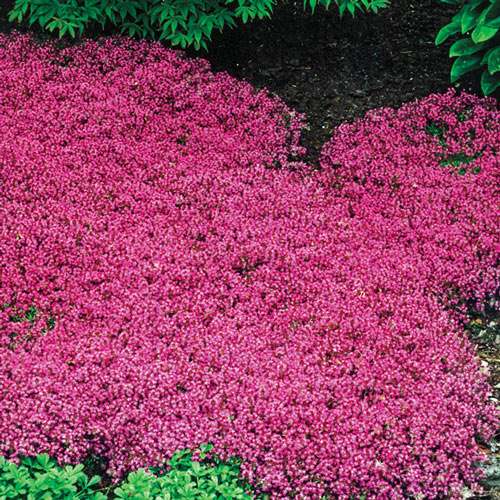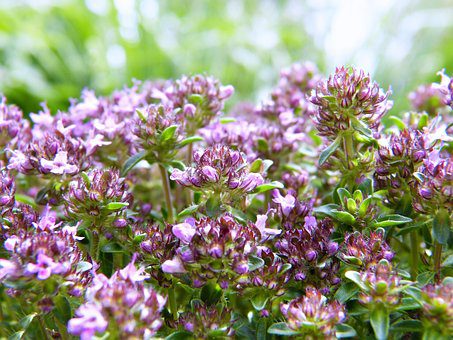Red Creeping Thyme – How to Grow, Care & Decorate?

Are you a plant lover and looking for beautiful and decorative plants for your lawn? With the beautiful addition of flowers, red creeping thyme is the best replacement for grass. Their growing period is insane, and fragrances provide a refreshing status. It not only adds beauty to your lawn, but it is also a perennial herb. Its herbaceous and drought-tolerant abilities make it unique from other lawn grasses.
These plants are actually a good combination to grow with your other plants. In this article, we will highlight its scientific and biological value with an elaboration of its beneficial and alternative uses. It will summarize its growth requirements and upbringing as well.
What Are Red Creeping Thyme?
It’s a perennial herb. Usually it makes the best deep one and beautiful blooms there. Moreover, they cover the ground in such a beautiful way. Additionally, it has culinary uses too. These are admirable for gardening. It makes the surroundings and ecosystem clear with its elegance. You will find wonderful fragrances once you crush its leaves. It’s actually a great decorative idea in front of houses or along roadsides. Moreover, it has the capacity to bear the traffic lights as well.
| Botanical name of plant | Thymus praecox Coccineus |
| Form type of plant | Perennial, herbaceous |
| Flowering time of plants | Early to midsummer |
| Mature size | 6 to 8inch wide, 2 to 6 inch tall |
| Growth rate of plant | Medium |
| Flower color | Red with pink shade |
| Height | 2-4 inches |
| Flower form of plant | Tiny flowers |
| Tolerant | Clay soil, loamy soil, acidic soil, sandy soil |
| Soil PH | Alkaline, Neutral |
| Spreading habit | Up to 12 inches |
Other Common Names For Red Creeping Thyme
- Crimson thyme
- Thymus serpyllum
- Mother of thyme
Scientific And Physical Details Of Red Creeping Thyme
Scientifically, this plant is known as “Thymus praecox ‘Coccineus”. Basically, it’s an herbaceous, drought-tolerant, and perennial plant. However, it appears to be delicate and belongs to the Lamiaceae. Moreover, they remain creeping throughout the time and evergreen as usual. They do, however, turn bronze in the autumn. Like other flowering plants, it also attracts different hosts and butterflies, which are good for biodiversity. Right after growth, they change their color from purple to crimson. They are usually four inches tall.
Types Of Red Creeping Thyme
Following are its well-known types:
1. Thymus serpyllum, also known as purple creeping thyme.
2. Thymus praecox articus, which is known as arctic creeping thyme.
3. Thymus praecox “Coccineus”
4. Thymus praecox, which is known as wild thyme.
5. Thymus serpyllum, which is known as wild French thyme.

For What Purpose Red Creeping Thyme Use?
Due to its attractive and wonderful appearance, it is useful as a decorative piece. Due to its versatility, it is good to grow in your backyards or in front of your houses. These are best used for the sidewalk areas, xeriscaps, understories, and other decorative areas.
How to Grow Red Creeping Thyme?
Like other plants, you also need to follow some basic steps for growing these flowering plants. Moreover, you can also purchase it from the nursery. However, they are actually not faster-growing plants overall. For smooth growth, you can easily purchase them from nurseries. Additionally, they are easier to buy in bulk. Usually, it has no root system in that area. That’s why you need to maintain and manage its watering system properly. However, you have to plant large quantities of plants that have been transplanted.
Holes Size For Plants
However, in order to transplant the plants, you need to dig a hole. Additionally, you need to dig a hole that is actually wider and longer than the plant root. After placing the seed or plant roots, try to manage them with your hands. You must place each plant with gentle care. Try to keep the soil wet and fill the hole with a proper water supply. These plants are actually drought-tolerant.
Bed Preparation For Growing Red Creeping Thyme
Once you buy grown plants, you have to prepare their growing bed. However, if your growing seed rises, you can also follow these steps.
- Select a good, sunny location to keep these plants.
- It can usually tolerate full or partial sun as well. However, 6 hours of light is good for its growth.
- You need to provide excellent soil drainage.
- For better growth and to provide plants with supplements, use compost.
- Yes, you can also add leaf molds, sand, or clay to make it more consistent.
The Best Growing Time For Red Creeping Thyme
Plants have some seasonal requirements for better growth. Its growth depends on certain factors. The spring or fall seasons are best for its growth. Furthermore, it also includes what kind of space or landscape you are going to use. However, it becomes difficult for the baby plants to grow and establish themselves in the summer.

Spacing Recommendations
Whenever you are growing plants, you should also consider some basic spacing guides. Usually the 10–12 spacing size is preferable for these flowering plants. However, for a better outlook, you can also grow them near each other. Before transplanting these plants, you must visualize and make the perfect spacing for the plants. Moreover, after making all this, you can also choose to make a design theme outside or a border.
Propagation Steps
Its propagation is too simple. You can make it possible through cuttings, whether they have slight endings or stems. You can also cut out some of its branches that are actually not familiar with the flowering too soon. Water these plants throughout the day. You can easily grow them in the spring. Through potted cuttings or lower leaf cuttings, with time, the best growth can be seen.
How to Care Red Creeping Thyme?
Basically, these plants show a neutral reaction towards alkaline soils. Furthermore, you have to pay special attention to the plants when they are growing. These are;
- Firstly, it requires a ground cover of about 12–15 inches.
- Later on, you will have to trim the plant slightly for a better flowering experience.
- Moreover, you have to trim its old foliage at the start of each spring season.
- Try to give them maximum fertilizer for growth.
- Make sure to water it daily.
Pruning Requirements For Red Creeping Thyme
With the annual double pruning, the plants can grow easily. For that, there are two seasons that can be great for pruning. Firstly, you have to prune it during the early spring. However, the second pruning is ideal after its flowering period. You can easily prune them with hand tools and other little instruments. Moreover, you should avoid cutting from the points that are near the soil.
Pros Of Growing Red Creeping Thyme
Whenever your lawn or garden becomes dull or patchy with time, So it’s the best addition to your garden decorations. Moreover, it has other benefits as well, which are;
Ability To Resist Drought
Basically, it requires less water than any other grass. However, it actually dislikes the wet environment. With traditional water amounts, it can easily grow in the sun and in drought conditions.
Attracts Pollinators
Due to their fragrance and beautiful colors, they are attractive to animals. Due to their nectar production ability, they attract different animals, including butterflies and bees.
Replanting Status
It’s a perennial herb. So you don’t need to replant these plants again and again. Hence, they are no longer available for more than one year. Moreover, they are evergreen and actually available all year.
Mowing Requirements
It doesn’t require much mowing for its plants. Usually, you can mown these plants once a year.
Aromatic Plants
Moreover, these plants have a pleasant smell. Through crushing, these can be made crushable and used for multiple purposes as well. They can be useful for kitchen use as well. This beautiful herb serves great culinary and ornamental purposes.
Repels Mosquitoes, Deer, And Other Animals
However, it actually attracts different pollinators but acts as a repellent for mosquitoes.
Walk-Able Grass Consistency
It doesn’t contain any thrones or pickles in its stem or leaves. That’s why you can also easily walk on these grasses.
Fertilization
There is no need to fertilize these lawn grasses.

Cons Of Red Creeping Thyme
Beyond its benefits, it also has some downsides. Whenever you are growing these plants in your lawn, it will be expensive for you. Most of the sources suggest that you need to plant it in smaller areas. The other downside of this plant is its germination difficulty. Its growth time is usually slow. Whenever you think about growing these plants, you have to kill all other grasses on other sides of the lawn and in that area.
Are Red Creeping Thymes Edible?
They require at least six hours of sunlight for effective growth. They easily attract animals and other pollinators. Moreover, they are edible. Due to their edible abilities, they are beneficial and valuable plants. They usually contain certain elements that protect them from erosion. Usually, they are also able to restore the moisture from the taller plants.
Designing And Decorating For Red Creeping Thyme
Their colorful and attractive themes are beautiful and actually admirable. The blending of lower and taller plants actually gives the plants the best outlook and growth. It can easily transform your area with its beauty.
Xeriscaps
These are usually suitable for all kinds of gardens. Within the irrigation zone, the plants are paired up together. The actual meaning of xeriscaps is the ability of a plant to stick with other plants. These plants usually don’t require or use much water. It means you can combine these pants and grow them.
Red Creeping Thyme And Rock Gardens
With the steep tops, this is the best and most beautiful idea. With low maintenance requirements, it’s best to design and arrange the plants here. These panting senses will create and attract the natural beauty and people’s attraction. With these, you can manage the best-looking landscapes.
Astounding Companion Plant
Whenever you think of covering your garden or ground, these are beneficial for you. They are abundantly harvesting plants with higher culinary abilities.
Useful To Make Container Gardens
Whenever you are growing your plants in the sense of thrillers, fillers, and spikes, As a result, they will play an important complementary role, working as spinners. With the amazing color schemes and other combinations of plants, it will look great.
How Do They Protect Themselves From Pests And Diseases?
Like humans, each organism has an immune system. Red creeping thyme plants contain certain antimicrobial and antibacterial properties. Due to their abilities and antifungal features, they deal with various diseases. These agents are also helpful to repel these agents and pests as well. Their roots are deeply present in the soil. If the rooting system is weak or present with poor water, it is likely to suffer from these. For better disease protection, you need to place compost and other fertilizers in the soil. Moreover, you have to face the problem of slugs with these plants due to their attraction.
FAQs
What is red creeping thyme used for?
Due to their antimicrobial and antifungal properties, they are quite useful for various purposes. It’s best used for decorative purposes. Moreover, it repels mosquitoes, deer, and others.
Where does red creeping thyme grow best?
They usually require sunlight for proper growth. Moreover, they grow better in Turkey and in southern Europe.
Does red creeping thyme smell?
They have a lighter fragrance. Whenever they are trodden, they give off an exciting smell.
Conclusions:
Whenever you are looking for decorative plants instead of grasses, red creeping thyme plants are best for you. However, you can use these for many other beneficial purposes. It has benefits like being able to grow in drought areas, under high sunlight, and during an easier growth period. With its antimicrobial properties, it has the best qualities, but it attracts slugs. It actually presents a wonderful view of rich lavender-type blooms on the ground. That’s why it is easy to grow plants from the beginning.


